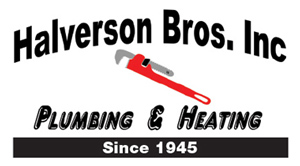We all like saving money on our monthly utility bills, but you should know there’s a way to do it when you aren’t even home.
The key is your thermostat. By making the most out of your thermostat, you can structure its daily schedule around your personal preferences. You can create a number of automated temperature settings for when you’re at home, away or even when you’re sleeping.
With a few simple adjustments, you’ll be able to enjoy comfortable temperatures while cutting down your energy bills. Take a look at a few ways your thermostat doesn’t have to use up all your summer spending money:
While at Home
When you’re home, you want comfortable temperatures. It’s only natural to want your thermostat lower in the summer while inside to appreciate the cool air.
But the ideal temperature for when you’re in your home during the summer is actually around 78 and 80 degrees Fahrenheit. By adjusting things a few degrees, you’ll keep cool while still keeping your energy bills low.
While Out of the House
When setting the temperature for when you are out of the house in summer, it’s extremely common to move the thermostat higher than normal.
Depending on the local climate or your home’s location, you can set the thermostat to temperatures as high as 88 degrees while no one is home and then lower it back to the sweet spot of 78-80 degrees after you return. This way, your air conditioning system isn’t working around the clock to keep an empty house cool.
While Asleep
For a full night’s rest during summer weather, you want a nice cool temperature. A great place to start is between 68-72 degrees Fahrenheit. This will keep you from getting too hot or too cold at some point overnight.
Other Strategies for Lowering Energy Use:
- Smart thermostat installation: Trying a smart thermostat in the summer can lower energy costs since it can plan your temperature adjustments according to your lifestyle and idea of what comfortable is. They can lower the temperature while you are home or sleeping, while allowing it to get a little warmer when no one is around. Using reputed brands and models such as the Lennox iComfort, you can adjust the temperature remotely through your smartphone, tablet or laptop. Planning smart thermostat installation in your Menomonie and western Wisconsin home is an effortless way to set the correct temperature no matter where you are.
- Update your existing HVAC system: A high-efficiency HVAC system can save money in the long run. By investing in a more energy-efficient system, you can also count on lower utility bills since more efficient equipment requires less energy to achieve comfortable temperatures. Air conditioning installation in Menomonie and western Wisconsin is only a phone call away, so don’t hesitate to reach out to local pros like Halverson Brothers Inc who can set you up for success.
- Schedule annual AC maintenance: Whether or not you keep up with regular air conditioning maintenance in Menomonie and western Wisconsin can have a big impact on your monthly energy use. If you stay on top of cleaning key components like the coils, checking for damage and clearing air vents of dust and debris, this can help your HVAC system run more efficiently. Increasing efficiency also limits strain on key parts and lowers operational costs, lowering total energy use and eventually the total monthly bill.
- Replace your air filter regularly: A regular schedule for cleaning or replacing the HVAC system’s air filter saves money by improving airflow. When filters become clogged, air conditioners have to work harder, and this greater strain could shorten the system’s life span and lead to breakdowns.
- Check if you have enough insulation in the attic: Insulation is a vital part of maintaining an energy-efficient home, securing the hot air outside and the cool air inside through summer. The North American Insulation Manufacturers Association (NAIMA) offers an official recommendation stating homeowners in souther states should have at least 13-14 inches of insulation, while states further north need 16-18 inches.
- Inspect your air ducts: A leak in the air ducts could increase your energy bills much more than 20 percent, plus it can also lead to problems with your water heater, clothes dryer and other appliances throughout your home. Checking your ductwork for leaks and sealing them can fix both of those problems.
- Seal all other leaky spots in your home: Sealing up other leaks in your home with caulk, foam sealant or weather-stripping can help keep it cooler on hot summer days. Don’t forget to check for any gaps around windows, doors and even outdoor fixtures. Devoting time and effort to sealing leaks now can help you save a lot over time.






